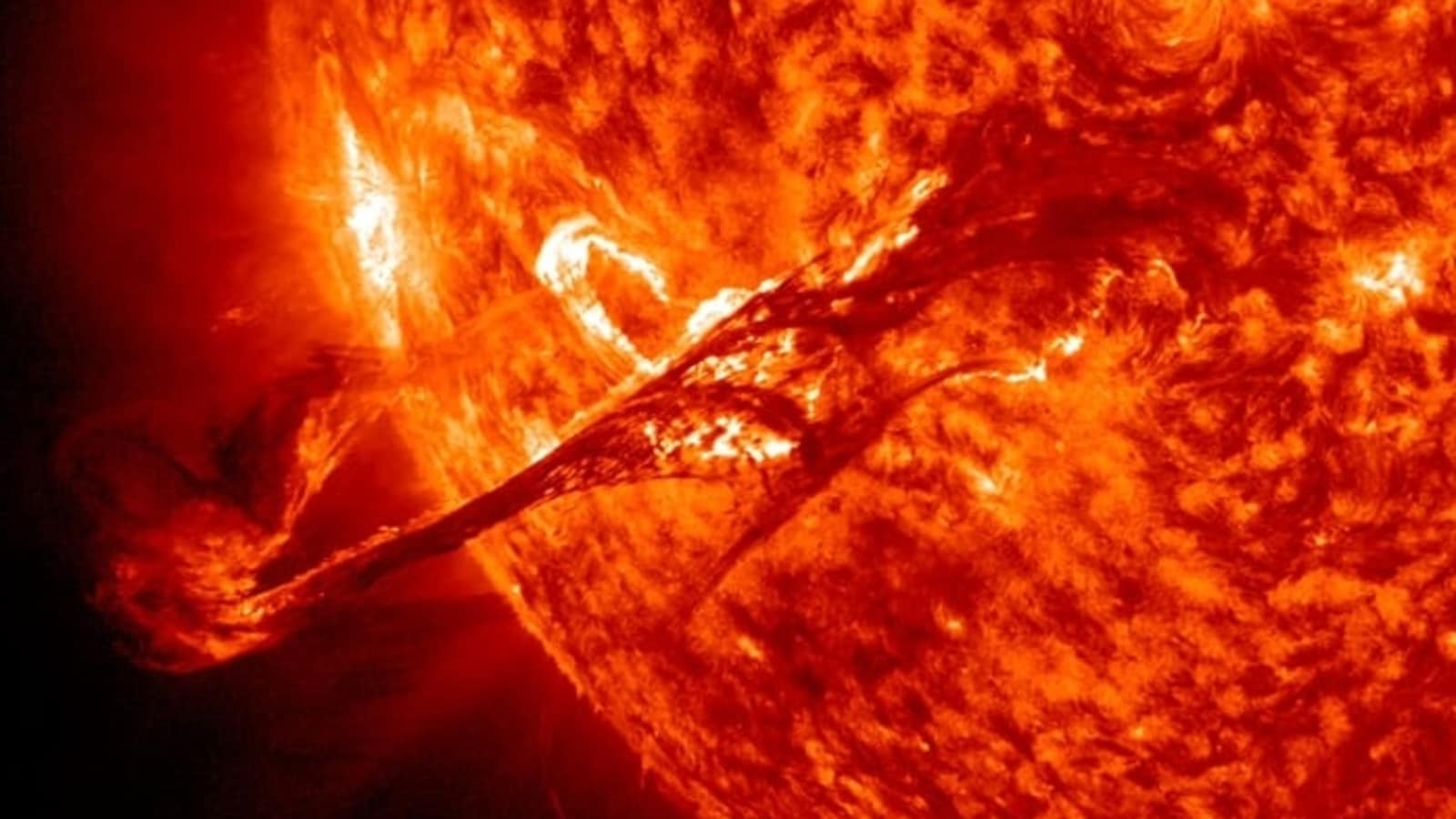Terrifying days ahead! Consecutive solar storms to hit the Earth; Can cause radio blackouts
The next two days are going to be concerning as a CME hits the Earth tomorrow, August 17 to cause a powerful solar storm. And it will be followed by fast-moving solar winds striking the planet on August 18.
The next two days are going to be scary for the planet Earth as the Sun has launched two dangerous solar attacks towards our planet. The first of them is a coronal mass ejection (CME), which is expected to hit us tomorrow, August 17, and can cause up to a G2 class solar storm. And right afterwards on August 18, our planet’s magnetosphere will also be impacted by some fast-moving solar winds which will likely cause another storm whose intensity cannot be predicted at the moment. On one hand, it means aurora enthusiasts will get to experience more spectacular sky-lights, but on the other hand, radio blackouts and communication disruptions are also expected which will affect a lot of people. So, how terrifying are the next two days going to be? Read on to find out.
The upcoming solar storm information was reported by SpaceWeather.com which noted on its website, “Minor (G1) to moderate (G2) solar storms are possible on Aug. 17th when a CME is expected to sideswipe Earth’s magnetic field. The CME was hurled in our direction yesterday by a “dark plasma explosion,” described below. Following close behind the CME, a stream of high-speed solar wind could arrive on Aug. 18th, boosting the odds of a solar storm on that date as well”.
Solar storm troubles brewing for the Earth
The current prediction notes a G2 class solar storm, which is definitely not the worst we have seen this year (the month of June recorded a couple of G3 class storms), but it is still capable of causing shortwave radio blackouts as well as GPS disruption during the time the storm persists. This means all airplanes, ships as well as systems dependent on radio communication and GPS might face disruption as well. Ham radio operators will also not be able to access the lower frequencies.
However, despite the problems caused by this wave of solar storm, things can still get a lot worse. The Sun is nearing the peak of its 11-year long solar cycle and will hit its solar maximum phase in 2023. Till then, more severe solar storms are expected that can even damage satellites and cause power grid failures.
For all the latest Technology News Click Here

